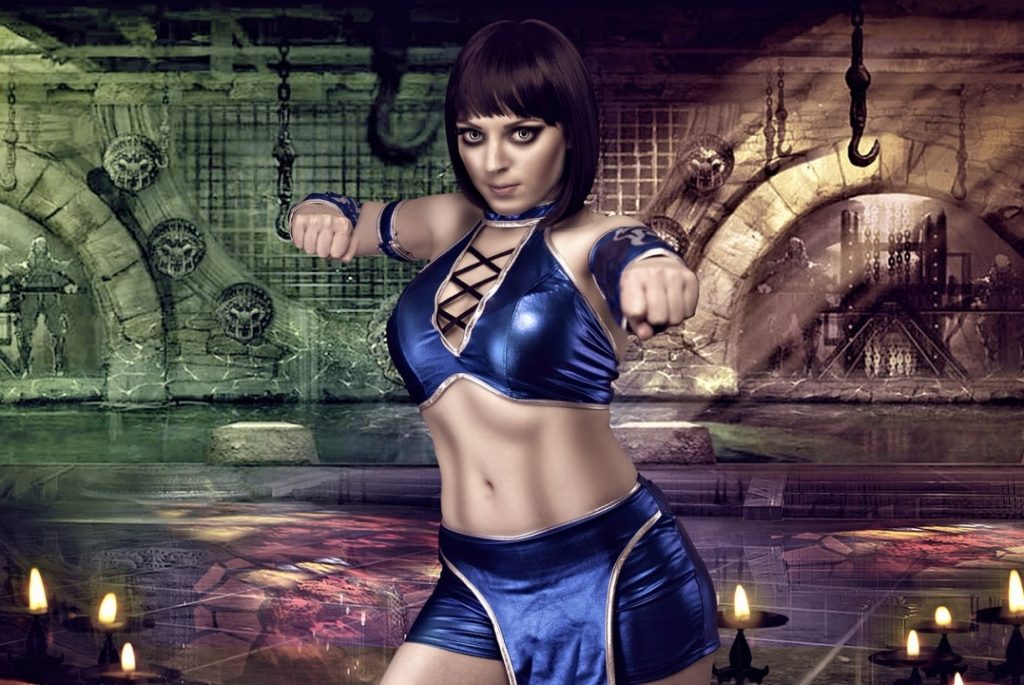Image by franktop from Pixabay
The cosplay community has always been at the forefront of creative innovation, blending traditional craftsmanship with cutting-edge technology. In recent years, artificial intelligence has emerged as a powerful ally for cosplayers seeking to elevate their creations beyond conventional limitations. From concept development to final presentation, AI tools are reshaping what’s possible in the world of costume play.
The Evolution of Cosplay in the Digital Age
Cosplay has evolved dramatically from its humble beginnings in the 1930s. What once required extensive manual skill sets now benefits from technological assistance that streamlines workflows while expanding creative possibilities. Modern cosplayers are increasingly incorporating AI tools into various stages of their process – from initial character design to costume fabrication and digital presentation.
“The integration of AI into cosplay represents a paradigm shift in how creators approach their craft,” explains Maya Chen, a professional cosplayer with over 15 years of experience. “These tools don’t replace traditional skills but rather augment them, allowing artists to push boundaries that were previously insurmountable.”
Conceptualization and Character Design
For many cosplayers, the journey begins with character selection and conceptualization. AI image generation tools have become invaluable for:
- Creating reference sheets for complex costumes
- Visualizing adaptations of 2D characters to 3D forms
- Exploring alternative designs and color schemes
- Generating inspiration for original character interpretations
Cosplayers working with characters from older media often struggle with limited reference material. AI tools can help by generating high-resolution interpretations of these characters from multiple angles. Similarly, when creating original characters inspired by existing universes, AI can visualize concepts before committing to material purchases.
Pre-Production Planning and Pattern Development
Once a concept is finalized, cosplayers must translate their vision into physical patterns and construction plans. AI tools assist with:
- Converting 2D reference images into 3D models
- Generating custom sewing patterns based on body measurements
- Simulating fabric behavior and material interactions
- Creating scaled templates for armor and prop pieces
“The pattern-making phase used to be the most intimidating barrier for beginners,” notes costume designer and cosplay educator Jordan Williams. “AI-assisted pattern generation has democratized the craft, allowing newcomers to attempt complex designs that would have previously required years of experience.”
Enhancing Reference Material
One persistent challenge in cosplay is working with low-quality reference images. When source material is limited or unclear, an AI image upscaler becomes an essential tool in the cosplayer’s arsenal. These sophisticated algorithms can transform blurry screenshots or concept art into crisp, detailed references without inventing inaccurate details.
Professional cosplayer Alex Martinez recounts: “I was working on a costume from an obscure 90s anime with only standard-definition screenshots available. After enhancing the references, I could finally see crucial details in the character’s shoulder armor that I would have otherwise missed entirely. The difference in accuracy was remarkable.”
Beyond simple upscaling, advanced AI image enhancement tools can:
- Restore damaged or low-resolution character artwork
- Enhance texture details for more accurate material selection
- Improve color accuracy when working from faded source material
- Extract clear views of complex accessories and props
Digital Identity and Character Portrayal
The cosplay experience extends beyond physical costumes into digital personas and character interpretation. Many creators are experimenting with generating companion content using AI headshot tool like GenYOU to develop unique interpretations of their favorite characters or to visualize themselves in costume before committing to a build.
“Character portrayal has always been about more than just the costume,” explains cosplay photographer Leila Wong. “Digital identity tools help cosplayers explore the essence of characters in new ways, sometimes revealing aspects of interpretation they hadn’t considered for their physical build.”
Prop and Accessory Design
Intricate props and accessories often define iconic cosplays, and AI tools are revolutionizing their creation:
- Generating 3D models for 3D printing based on 2D references
- Optimizing designs for structural integrity and wearability
- Developing texture maps for realistic prop painting
- Creating blueprint diagrams for complex mechanical elements
Cosplayer and prop maker Devon Rodriguez shares: “I was struggling with designing a functioning mechanism for an animated weapon. An AI-assisted design tool helped me visualize the internal structure and suggested modifications for better weight distribution. The final prop was both beautiful and functional—something I couldn’t have achieved as easily on my own.”
Costume Weathering and Aging Simulation
Achieving realistic wear patterns on pristine materials has always been challenging. AI texture generation allows cosplayers to:
- Simulate realistic battle damage on armor pieces
- Generate weathering patterns for post-apocalyptic costumes
- Create digital templates for aging fabric naturally
- Design realistic rust and corrosion effects
“The difference between a good costume and a great one often comes down to the subtle details of weathering,” notes competitive cosplayer Jamie Park. “AI weathering prediction has transformed my approach to finishing techniques, helping me visualize the end result before making irreversible changes to my costume pieces.”
Photography Enhancement and Digital Presentation
Once a cosplay is complete, presentation becomes paramount. AI tools support the final showcase through:
- Background replacement for thematic environments
- Lighting enhancement to highlight costume details
- Post-processing for cinematic quality images
- Animation of static cosplay photos for dynamic social media content
“The photography phase used to require expensive studio setups,” explains cosplay photographer Marcus Lee. “Now, AI-enhanced imaging allows creators to achieve professional results with minimal equipment. The democratization of high-quality presentation has elevated the entire community’s standard.”
Ethical Considerations and Community Response
While AI tools offer tremendous benefits, the cosplay community continues to grapple with questions about their proper role. Most established cosplayers emphasize that AI should enhance human creativity rather than replace it.
“There’s been some controversy around fully AI-generated ‘cosplays’ that don’t involve physical costumes,” admits cosplay contest judge Rebecca Chen. “The community generally agrees that while AI tools can support the creative process, the heart of cosplay remains in the human craftsmanship and physical embodiment of characters.”
Organizations like the International Cosplay Federation have begun developing guidelines for AI use in competitive cosplay, generally allowing AI-assisted design while requiring disclosure of methods used.
Future Directions: AR and Interactive Cosplay
Looking ahead, the integration of AI with augmented reality promises to create entirely new cosplay experiences:
- Real-time costume enhancement through AR overlays
- Interactive elements responding to viewer engagement
- Dynamic costume changes triggered by specific movements
- Environmental effects coordinated with character portrayal
“We’re just scratching the surface of what’s possible,” enthuses technology futurist and cosplayer Sophia Nakamura. “The next generation of AI-enhanced cosplay will blur the line between physical and digital reality, creating immersive character experiences that engage all senses.”
Balancing Technology and Tradition
The most successful AI-enhanced cosplays maintain a balance between technological assistance and traditional craftsmanship. Veterans of the community emphasize that AI tools work best when supporting, rather than replacing, manual skills.
“I use AI to solve specific problems in my builds, but the soul of the costume comes from my hands,” shares award-winning cosplayer Carlos Mendez. “The technology helps me realize my vision more fully, but the vision itself—and the joy of bringing a character to life—remains deeply human.”
Conclusion
As AI technology continues to evolve, cosplayers have unprecedented opportunities to push creative boundaries while preserving the craft’s essence. By thoughtfully incorporating these tools into their workflow, creators can focus more energy on artistic expression while overcoming technical barriers that might otherwise limit their vision.
The future of cosplay isn’t about choosing between technology and tradition—it’s about finding the sweet spot where AI amplifies human creativity, resulting in costumes and characters that capture imagination in ways previously impossible. For a community built on transformation and embodiment, AI represents not a replacement but a powerful new brush in an already diverse creative palette.

Robert Griffith is a content and essay writer. He is collaborating with local magazines and newspapers. Robert is interested in topics such as marketing and history.






